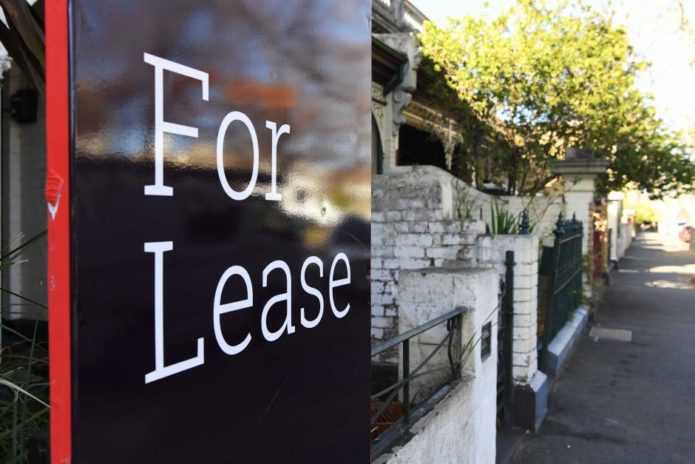PHOTO: Bindi Norwell – REINZ
January has pointed to a two-tiered real estate market continuing with 14 out of 16 regions experiencing annual increases in the median price for residential properties, including 5 new record median prices, while Auckland and Canterbury saw prices fall, according to the latest data from the Real Estate Institute of New Zealand (REINZ), source of the most complete and accurate real estate data in New Zealand.
The national median price for residential properties increased by 5.8% from $520,000 in January 2018 to $550,000 in January 2019. Prices for New Zealand excluding Auckland increased by 10.1% to $473,300 up from $430,000 in January 2018.
In Auckland, prices fell -2.4% to $800,000 down from $820,000 in January 2018 – the lowest median price for the region since February 2016. Additionally, Canterbury saw a -0.7% annual decline in median house prices from $435,000 to $431,900. This is consistent with the REINZ HPI which showed a -2.1% decrease for Auckland and -0.5% decrease for Canterbury.
Across the country, five regions experienced record median prices:
- Waikato: +12.6% to $550,000 (up from $488,500 at the same time last year)
- Manawatu/Wanganui: +21.7% to $348,000 (up from $286,000 at the same time last year)
- Marlborough: +16.3% to $477,000 (up from $410,000 at the same time last year)
- Otago: +6.4% to $475,475 (up from $447,000 at the same time last year)
- Southland: +15.6% to $277,500 (up from $240,000 at the same time last year).
Outside of those records, regions with the biggest annual increase in median price were:
- Gisborne: +21.1% to $333,000 up from $275,000
- Northland: +14.1% to $485,000 up from $425,000
- Wellington: +12.2% to $562,000 up from $501,000.
Bindi Norwell, Chief Executive at REINZ says: “January has pointed to a two-tier market continuing around the country with Auckland and Canterbury experiencing a slow down in price, but the rest of the country has seen strong price growth, including five regions achieving record median prices. This increase in price once again highlights how the lack of supply is continuing to push up house prices, therefore, it’s essential that as a country we address this fundamental issue sooner rather than later.
“From an Auckland perspective, the median house price in January of $800,000 was the lowest we’ve seen for 35 months with falls across Franklin, Rodney, North Shore and Papakura districts during the month ranging from -0.7% to -13.2%. However, Auckland City, Manukau City and Waitakere City all saw annual increases of between 1.5% and 9.5% showing that there are pockets of growth occurring across the region. December and January usually see prices decline and then pick up again in February and March, so we’ll be watching closely to see whether this is just the usual Christmas/New Year slowdown or whether this is the start of something wider. What we can say, is that it’s too early to call this a trend and it’s too early to confirm whether the Auckland market has actually turned,” says Norwell.
Warm weather saw Kiwis hit the beach bringing down January’s property sales
New Zealand’s third warmest January on record saw Kiwis heading to the beaches rather than to open homes meaning that the number of residential properties sold during January fell by -2.5% year-on-year. During January, 4,372 homes sold, which is 112 fewer than the same time last year making it the lowest number of properties sold in 24 months.
For New Zealand excluding Auckland, the number of properties sold decreased by -2.4% when compared to January 2018, from 3,299 down to 3,220 – 79 fewer houses and the lowest for 24 months.
In Auckland, the number of properties sold decreased by -2.8% year-on-year to 1,152 and was the lowest for 2 years.
Regions with the largest annual fall in volumes were:
- Nelson: -35.8% (from 81 to 52 – 29 fewer houses) – the lowest since January 2011
- Gisborne: -23.7% (from 38 to 29 – 9 fewer houses) – the lowest since September 2012
- Otago: -16.2% (from 302 to 253 – 49 fewer houses) – the lowest since January 2011.
However, there were some regions that saw an annual increase in sales volumes during January including:
- Tasman: +21.7% (from 46 to 56 – an additional 10 houses)
- Taranaki: +13.8% (from 130 to 148 – an additional 18 houses)
- Bay of Plenty: +11.5% (from 312 to 348 – an additional 36 houses)
- Southland: +9.5% (from 137 to 150 – an additional 13 houses).
“January is normally a very quiet month in terms of real estate sales as much of New Zealand heads to the beach to unwind after Christmas. However, following a slow December, January has also been very quiet from a sales volume perspective with the number of properties sold across the country the lowest in 24 months. We’ve also had the new Anti-Money legislation apply from 1 January which has had a strong impact on the volume of sales as the market adjusts to the changes.
“However, there were some areas that bucked the trend with 7 regions seeing an annual increase and Tasman and the Bay of Plenty seeing double-digit increases in the number of properties sold during January,” continues Norwell.
“While we’ve had two months of lower sales volumes, as people head back to work and schools and universities open their doors for learning, the real estate market tends to pick up again and return to normal. This is something we’d expect to see again this year with no signs yet pointing to a significant, longer term decline in sales volumes,” points out Norwell.
REINZ House Price Index (HPI) increases 3.1% annually
The REINZ House Price Index for New Zealand, which measures the changing value of property in the market, increased 3.1% year-on-year to 2,740. This is down -0.5% from its peak in October last year.
The HPI for New Zealand excluding Auckland increased 8.1% from January 2018 to a new record high of 2,691. The Auckland HPI decreased -2.1% year-on-year to 2,799.
The REINZ HPI saw 10 out of 12 regions experience an increase over the past 12 months, highlighting the overall continued strength of the property market. The exceptions were Auckland and Canterbury.
In January the Manawatu/Wanganui region again had the highest annual growth rate, a 16.0% increase to a new record high of 2,891, followed by Gisborne/Hawke’s Bay in second place with an annual growth rate of 15.7% to a new record high of 2,691 and in third place was Southland with a 15.2% annual increase to a new record high of 2,844.
Days to Sell highest in nearly 7 years
The median number of days to sell a property nationally increased to its highest level in nearly 7 years (since February 2012). In January the median number of days to sell a property increased by 2 days from 46 to 48 when compared to January last year.
For New Zealand excluding Auckland, the median days to sell remained steady at 46.
However, Auckland saw the median number of days to sell a property increase by 6 days from 45 to 51 – the highest number of days to sell in just shy of 10 years – since February 2009.
Marlborough had the lowest days to sell of all regions at 33 days, down from 42 at the same time last year.
“While January’s median number of days to sell usually tends to be on the higher side, January 2019 has been exceptionally so, with the national number of days to sell the highest in nearly seven years. It’s a similar picture when you look at Auckland, with the highest number of days to sell in nearly 10 years. Therefore, the comments that we made last month around a realistic approach to market value may help vendors sell their property in a more reasonable timeframe, still hold true,” says Norwell.
January sees lowest percentage of sales by auctions in 8 years
Auctions were used in 4.6% of all sales across the country in January, with 203 properties selling under the hammer – this is down from the same time last year, when 5.5% of properties (248) were sold via auction. This is the lowest percentage of sales by auction for 8 years.
Once again, Gisborne had the highest percentage of sales by auction across the country with 20.7% (or 6 properties) in the region sold under the hammer – up from 7.9% (3 properties) in January 2018.
Bay of Plenty saw the second largest percentage of sales by auction on 10.1% (35 properties) up from 9.9% in January 2018 (31 properties). Auckland took the spot of having the third highest level of auctions in the country with 7.4% (85 properties) sold under the hammer, down from 12.1% (143 properties) for the same period last year.
Inventory
The number of properties available for sale nationally decreased by -2.5% from 25,503 to 24,878 – a decrease of 625 properties compared to 12 months ago. The is the largest decrease in 5 months.
January saw 5 regions with an annual increase in inventory levels. Regions with the largest increases were:
- Taranaki: +10.9% from 606 to 672– an additional 66 properties
- Marlborough: +10.1% from 335 to 369 – an additional 34 properties
- Northland: +8.0% from 1,355 to 1,463 – an additional 108 properties.
Regions with the biggest falls in inventory were:
- Gisborne: -36.8% from 171 to 108 – 63 fewer properties
- Otago: -32.1% from 730 to 496 – 234 fewer properties
- West Coast: -25.6% from 609 to 453 – 156 fewer properties.
Wellington and Gisborne both had the lowest levels of inventory with only 7 weeks of inventory available to prospective purchasers. Otago remained on only 8 weeks’ inventory, followed by Hawke’s Bay on 9 weeks’ inventory and Manawatu/Wanganui and Nelson on 10 weeks’ inventory available.
“Inventory levels continue to be of concern at the moment for the industry, particularly with four regions having less than 10 weeks’ inventory available. These low levels of inventory will continue to push prices up in these regions and are likely to cause people to have to look further out for affordable properties,” concludes Norwell.
Price Bands
The number of homes sold for less than $500,000 across New Zealand fell from 47.7% of the market (2,137 properties) in January 2018 to 42.7% of the market (1,865 properties) in January 2019.
The number of properties sold in the $500,000 to $750,000 bracket increased from 27.5% in January 2018 (1,232 properties) to 31.7% in January 2019 (1,386 properties).
At the top end of the market, properties sold for $1 million or more decreased from 11.4% in January 2018 (509 houses) to 10.5% in January 2019 (461 houses).
ENDS
PRESS RELEASE SUPPLIED BY REINZ
















